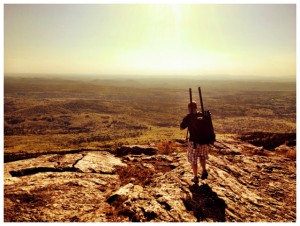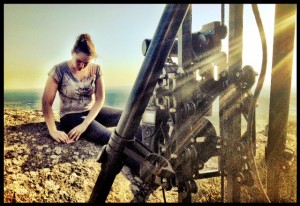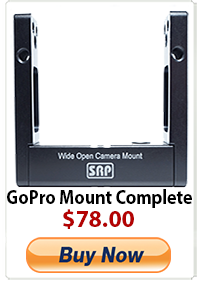The Extra Mile. DSLR Video.
I can’t help but feel the the DSLR revolution has not only advanced what we can do with a camera (portability, serendipity, camera movement, etc) but has also created a lazy trend as well. Something so light with a mindset of little thought needed can change that spontaneity into a rushed project. The tripod seems to be an afterthought. A shoulder mount rig or handheld becomes the norm. It used be be hard to get your film made. You had to raise money. You had to get permits and plan months in advance. You looked at how you could add production value to convince that family friend or business owner to “invest” $5-$20,000 in your movie. Cameras cost money to rent, film stock, processing and video transfers were expensive. Films were not put together in a week or even a few days like they are now. Camera tests were almost unheard of because nobody wanted to spend there money on them and the audience was not there as it is today (you tube, vimeo, blogs, etc) Films took real effort to pull off. Many got 50-75% of their shoot done only to run out of money. An independent film around the time I made my first in 1996 cost approximately $40,000 (with favors) – $500,000 to make on film. Video really wasn’t an option then because of the quality. These days you can make a movie for $1,500 with amazing picture quality. The problem is the effort behind it seems different now. Guys sitting around on a couch talking, bad handheld, overly experimental “old school” lenses, etc. Almost no production value or effort. Now I am generalizing as there is a lot of good work out there. In fact there is some amazing work out there. That work stands out usually because it is well planned. The camera movement is fluid and supported. The production design is preplanned, locations were scouted. These projects stand out as the elite.
Now before I get slammed I want to be clear that I do not consider myself a film maker. Yes I had made and sold a film before, but to be honest it was made specifically for the purpose of selling it. It wasn’t very good and chocked full of exploitation. It’s so bad that if you can manage to actually find a copy of it you will notice the distribution company actually cut in scenes from two other movies for more T&A. Just what B movie buyers wanted at the time. Plenty of T&A, blood and guts, action, guns, etc. That was a long time ago but even then I used Steadicam, a real dolly with track, 50k of light, negative fill, great locations, real actors, etc. You had to put the money on the screen.
Jump forward to today and you could say the projects I do (outside of commercials) are hastily put together without a real amount of effort and I do a fair amount of camera tests / samples. Makes me sound like a hypocrite doesn’t it? to a degree you would be correct. The difference is where you put your heart however. The heart is an exception I call “Operation Origami” A film I have put 6 months so far into shooting. Shot in multiple locations in the US (NH, NYC, RI, MA, Vegas, Los Angeles, etc) all with a lot of pre-production and preparation. The average shoot day involves a day or two of gear preparation, packing, testing, etc. Usually we carry about 45-70lbs of gear to each location. Most of this is in one backpack with a secondary holding a backup camera and misc support. The difference between this project and any other is that I have a personal invested interest in it. Its important to me and I genuinely am making it for myself. Originally I was making this film as a test for a large commercial opportunity I have. The second reason is I wanted to make a project with my girlfriend who is very creative. I have since found myself wanting to make this for myself. I don’t care about what others think about it. I have no intention of putting it in any film festivals, etc. Its just a very personal project and therefore putting in a real effort makes sense, builds worth and personal value.
A great example of this is last weekend we packed two backpacks (mine 50lbs, hers 25lbs) and drive an hour to climb a mountain to shoot at the summit. Once we got there it was 80+ degrees and we had no bug spray (black flies were everywhere and biting). The climb was a 27-60 degree grade and took approx 2 hours to climb. About 2.2 miles up, then back down. Neither of us had climbed in the past few years (me 5, her 13) so it was pretty rough with all the gear we had. The path to the top was all rock and offered plenty of opportunities to twist ankles, etc. Regardless, we made it all the way up 3,100+ feet. The view was spectacular. Just as we had envisioned. I spent a fair amount of time setting up my gear to get the perfect shot. The flies were everywhere and they were hungry. We did three setups for a total of 10 seconds of our film. Yes 10 seconds of footage. Now we had another 2 hours down the mountain as the sun was going down. Once down we still had an hour drive home, then it was time to offload the footage. The drive to, climb up, shoot, climb down, drive back was a good seven hours of our day. The prep and post prep was a good two-three hours as well. Nine hours of our weekend (we both work full time jobs) gone for 10 seconds of our film. Hopefully the final product once complete will be as well received as we envisioned it. It was worth it.
Mike Sutton @MNS1974











